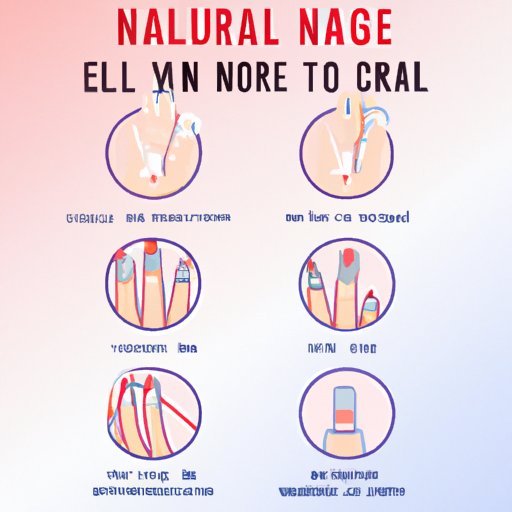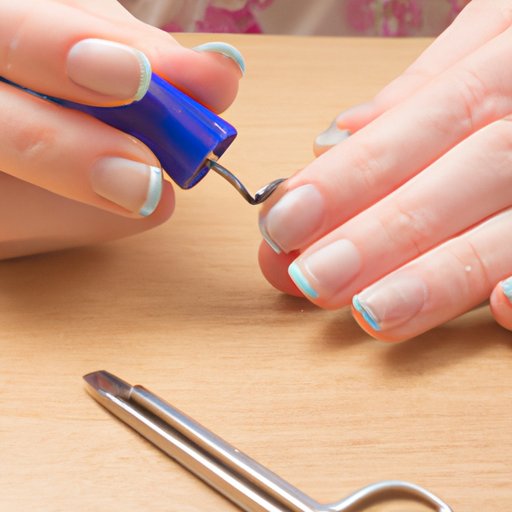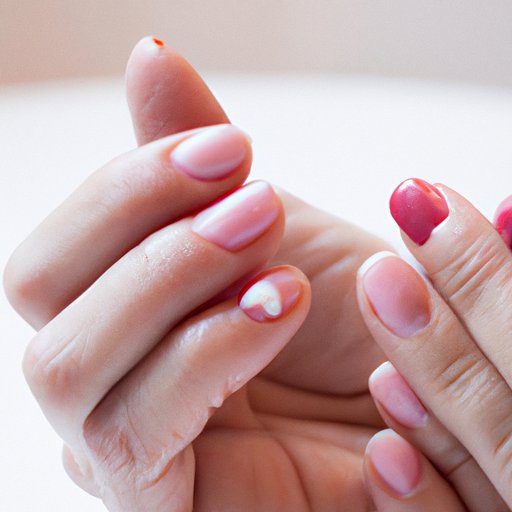Introduction
Nail health is often overlooked when it comes to assessing overall health, but the condition of your nails can actually provide valuable insight into your body’s internal functions. From discoloration to brittleness, there are a number of signs that can indicate underlying health issues. But what do these signs mean, and how can you use them to get a better understanding of your health? In this article, we’ll explore what your nails say about your health and how to interpret the clues they offer.
Common Nail Conditions & What They Reveal About Your Health
There are several common nail conditions that can indicate underlying health issues. Let’s take a look at some of the most common ones and what they may be telling you about your health.
Brittle nails
Brittle nails are one of the most common nail conditions, and can be caused by a variety of factors, including nutrient deficiencies, dehydration, poor circulation, and frequent contact with water or chemicals. According to Dr. Dana Stern, a dermatologist specializing in nail health, “It’s important to recognize that brittle nails can be a sign of something more serious like hypothyroidism, psoriasis, or even a fungal infection.”
Discoloration
Discoloration of the nails can also be an indicator of certain health conditions. For example, yellow nails can be a sign of respiratory problems such as bronchitis or sinus infections. White nails may be a sign of liver disease, while dark streaks may indicate melanoma. It’s important to note that discoloration can also be caused by trauma or medication side effects, so it’s important to consult with a doctor if you notice any changes in the color of your nails.
White spots
White spots on the nails are usually harmless, but can sometimes be a sign of zinc deficiency or calcium deficiency. If you notice multiple white spots on your nails, it’s best to consult with a doctor to rule out any potential underlying health issues.
Ridges and lines
Vertical ridges running from the cuticle to the tip of the nail may be a sign of aging, but they can also be indicative of a vitamin B12 deficiency. Horizontal lines, on the other hand, are usually caused by physical trauma to the nail bed.

How to Read Your Nails for Health Clues
The key to reading your nails for health clues is to examine the shape and color of your nails, as well as any changes that occur over time. Pay close attention to any discoloration, ridges, or lines, and if you notice any significant changes, make sure to consult with a doctor.
The Surprising Things That Nails Can Tell You About Your Health
Your nails can be a window into your overall health, revealing information about a number of underlying health conditions. Here are some of the surprising things that your nails can tell you about your health:
Anemia
Anemia, or a lack of red blood cells, can cause your nails to become pale, brittle, and easily broken. According to the American Society of Hematology, “Patients with anemia may notice that their nails are thin and concave, with a whitish-yellow hue.”
Diabetes
Diabetes can cause a number of changes to the nails, including thickening of the nail beds and yellowing of the nails. According to a study published in the International Journal of Dermatology, “Patients with diabetes often have yellowing and thickening of their nails, which can be an indication of their underlying condition.”
Thyroid issues
Thyroid issues can also cause changes to the nails, including brittle nails, splitting, and ridging. A study published in the journal Endocrine Connections found that “patients with hypothyroidism may experience brittle nails, splitting of the nails, and ridging of the nails.”
The Most Important Nutrients for Healthy Nails
In addition to being aware of the signs and symptoms of underlying health conditions, it’s also important to make sure you’re getting enough of the essential nutrients needed for healthy nails. These include:
Vitamin A
Vitamin A is essential for keeping nails strong and healthy. Foods rich in vitamin A include carrots, sweet potatoes, spinach, kale, cantaloupe, and eggs.
Vitamin C
Vitamin C helps the body absorb iron, which is essential for healthy nails. Foods rich in vitamin C include oranges, strawberries, kiwi, bell peppers, and broccoli.
Iron
Iron is essential for healthy nail growth, and foods high in iron include red meat, poultry, fish, legumes, nuts, and leafy greens.

How to Maintain Healthy Nails Despite Unhealthy Habits
While eating a balanced diet rich in essential vitamins and minerals is important for maintaining healthy nails, there are also certain habits you should avoid in order to keep your nails looking their best. These include biting, picking, and excessive trimming of the nails. Additionally, wearing gloves when working with chemicals or doing household chores can help protect your nails from damage.
A Guide to Diagnosing Health Problems from Your Nails
If you’ve noticed changes in your nails that could indicate an underlying health issue, it’s important to consult with a doctor. Your doctor will be able to provide a diagnosis based on your medical history and any laboratory tests that may be necessary. Additionally, your doctor may recommend lifestyle changes or supplements to help improve your overall health.

What Your Nail Color Says About Your Health
The color of your nails can also provide clues about your health. Let’s take a look at some of the most common nail colors and what they may be telling you about your health:
Pale nails
Pale nails can be a sign of anemia, liver disease, malnutrition, or hypothyroidism. It’s important to consult with a doctor if you notice any changes in the color of your nails.
Yellow nails
Yellow nails may be a sign of respiratory issues such as bronchitis or sinus infections. They can also be caused by smoking, fungal infections, or certain medications.
Blue nails
Blue nails can indicate a number of underlying health issues, including heart disease, lung disease, or kidney failure. It’s important to consult with a doctor if you notice any changes in the color of your nails.
Conclusion
Your nails can be a valuable source of information when it comes to understanding your health. By paying attention to the shape and color of your nails, as well as any changes that occur over time, you can gain valuable insight into potential underlying health issues. Additionally, by making sure to get enough of the essential nutrients needed for healthy nails, you can ensure that your nails stay strong and healthy. Finally, it’s important to consult with a doctor if you notice any changes in your nails, as they may be indicative of a more serious underlying health issue.
(Note: Is this article not meeting your expectations? Do you have knowledge or insights to share? Unlock new opportunities and expand your reach by joining our authors team. Click Registration to join us and share your expertise with our readers.)
